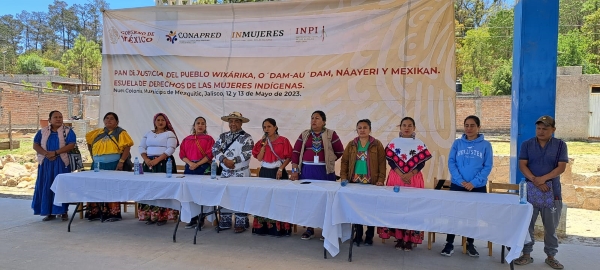A Comparative Analysis
Gender equality is crucial to a society’s progress towards a fair and just future. Mexico, the United States (USA), and Canada are three North American countries with distinct socio-economic and cultural backgrounds. This article will compare the state of gender equality in these nations using data from the PEW Research Center, shedding light on the progress made and the challenges that persist.
Gender Equality in the Workforce
In recent years, all three countries have seen progress in gender equality in the workforce. However, significant disparities still exist. According to PEW Research, in 2020, women in Mexico earned, on average, 16% less than men. In contrast, the gender pay gap in the USA stood at around 18%, and Canada reported a gap of 13%. While the numbers suggest that Canada is doing relatively better in narrowing the gender pay gap, all three nations have work to do to achieve true pay equity.

CONAPRED (Consejo Nacional Para Prevenir la Discriminación) is Mexico’s National Council for the Prevention of Discrimination. The Council addresses issues of gender equality, Indigenous and Afromexican affairs, LBGTQ rights, and other matters of eliminating discrimination.
Women in Leadership Positions
The representation of women in leadership positions is a crucial indicator of gender equality. One of the most notable achievements in Mexico was establishing a gender quota system in 1996, which mandated that political parties ensure that at least 30% of their candidates for federal and state legislative elections are women.
In Mexico, women held 48% of parliamentary seats in 2020, the highest percentage among the three countries. In the USA, women held 27% of congressional seats in 2020, while Canada reported 29% female representation in its federal parliament. Despite these improvements, all three countries still strive for greater gender balance in political leadership.
Education and Literacy
Education is often considered a fundamental factor in achieving gender equality. In all three countries, women have made substantial progress in closing the gender gap in educational attainment. In Mexico, the gender gap in literacy rates has almost disappeared, with both men and women having similar literacy rates. In the USA and Canada, women have higher literacy rates than men. This demonstrates that women in these countries have made significant strides in education and literacy.

The school of rights for indigenous women (Escuela de derechos de las mujeres indígenas) in Nueva Colonia, in the city of Mezquitic, Jalisco, is one of many that has been established throughout Mexico.
Gender-Based Violence
Gender-based violence remains a significant challenge in the pursuit of gender equality. Despite legal efforts to combat violence against women in Mexico, the country has seen alarming rates of femicide and domestic violence. In contrast, the USA and Canada have implemented stringent measures to address gender-based violence, with laws, hotlines, and support services. Nevertheless, violence against women continues to be a concern in all three countries, emphasizing the need for continued efforts to eradicate it.
Schools and universities in Mexico are focusing on teaching anti-violence. The flyer above is from UAGro, the tourism university for the State of Guerrero.
Maternity and Parental Leave
Maternity and parental leave policies are essential for supporting working mothers and fostering gender equality. In Mexico, the government provides 12 weeks of paid maternity leave, which is relatively shorter than what is available in the USA and Canada. On the other hand, the USA does not have a federal paid maternity leave policy, but some states have enacted their own. Canada leads in this aspect, offering up to 18 months of paid parental leave, which can be shared between parents, promoting greater gender equality in caregiving responsibilities.
Access to Healthcare
Access to healthcare is another crucial factor in the gender equality equation. In Canada, healthcare is publicly funded, ensuring all citizens have access necessary medical services. In the USA, access to healthcare varies significantly, and the high cost of medical care can disproportionately affect women, particularly those from marginalized communities. In Mexico, while there have been improvements in healthcare access, disparities still exist, especially in outlying and rural areas.
Conclusion
In the quest for gender equality, Mexico, the USA, and Canada have made significant strides in various aspects. Mexico has made notable progress in political representation, while the USA and Canada have taken essential steps in education and healthcare. However, gender disparities, including the gender pay gap and gender-based violence, persist in all three countries.
Policymakers, organizations, and individuals must continue their efforts to advance gender equality. This includes implementing policies that promote pay equity, addressing violence against women, and providing comprehensive support for working parents. By learning from each other’s successes and challenges, Mexico, the USA, and Canada can work towards creating more equitable societies where gender does not determine one’s opportunities or quality of life.
Related Articles:

